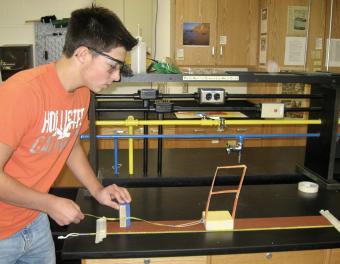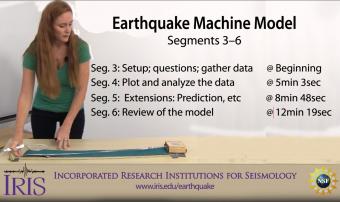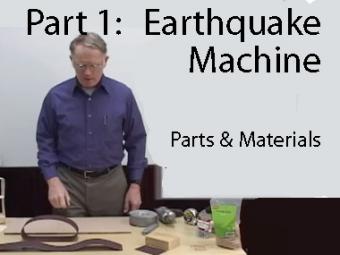How can we demonstrate magnitude and frequency using a model?
Earthquakes are associated with displacements on faults. Faults lock and a displacement occurs when the stress across the fault builds up to a sufficient level to cause rupture of the fault. This stick-slip process is known as elastic rebound.
In this lesson, learners work collaboratively in small groups to explore the earthquake cycle by using a mechanical model. To make learners’ prior knowledge explicit and activate their thinking about the topic of earthquakes, each learner writes their definition of an earthquake on a sticky note. Next, through a collaborative process, small groups of learners combine their individual definitions to create a consensus definition for an earthquake. Using an open-inquiry approach, they then experiment with the Earthquake Machine and compare their group’s definition of an earthquake to the behavior of the model. Finally, the entire class discusses how the model is both like and unlike the actual phenomena of an earthquake.
Learners will be able to:

Using a block-and-sandpaper model, students collaborate in small groups to investigate how energy is stored elastically in rocks and released suddenly as an earthquake (the earthquake cycle). This activity emphasizes the role of mechanical models in understanding and testing ideas in science.

Using the Earthquake Machine as a model, two groups of learners are presented with separate claims about earthquakes. Learners design an investigation to collect data to either refute or support their claim. After collecting evidence, the information is used to construct arguments regarding their claims.

This video shows how to build the "Earthquake Machine", a physical model that represents the “earthquake cycle”, the slow accumulation of elastic energy in rocks on or adjacent to a fault followed by rapid release of elastic energy during an earthquake.
We encourage the reuse and dissemination of the material on this site as long as attribution is retained. To this end the material on this site, unless otherwise noted, is offered under Creative Commons Attribution (CC BY 4.0) license